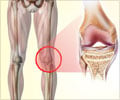A new study in mice reveals how estrogen might play a big role in the making of macho males.
A new study in mice reveals how estrogen might play a big role in the making of macho males.
The report in the October 2nd issue of Cell, a Cell Press publication, reveals how early estrogen exposure "masculinizes" the brain circuitry, predisposing boys to be boys as it were. That early event is specifically critical in producing male mice that will pick fights with other males and that dutifully mark their territories with urine."It's been known for decades that estrogen may play a role in making males behave like males," said Nirao Shah of the University of California, San Francisco. "What we do here is to provide insight into the logic of how estrogen regulates that behavior."
The basis for differences between the sexes in such behaviors, they show, may reside in the neurons that are equipped with an enzyme, called aromatase, that converts testosterone into estrogen. The masculine brain has more of those testosterone-converting neurons in certain regions. The researchers now show that these neurons establish a unique neural circuitry in males, and that this difference in wiring depends on estrogen.
The researchers found that female mice exposed to estrogen as pups get wired to behave as "tomboys" of a sort. Their aromatase neurons now look like what is seen in the male brain, and the female mice take on aggressive and territorial behaviors typically reserved for males.
But if estrogen, the female hormone, establishes male behavior patterns, why don't girls act like boys? Shah explains that the ovaries normally don't pump out any hormone that early in life, but males do see a surge in testosterone at a young age, at least some of which gets converted by aromatase to estrogen.
The findings indicate that adult gonadal hormones are not the entire story when it comes to determining masculine versus feminine behavior, Shah said. "Rather than the gonadal hormones telling the adult brain what do to, the brain interprets signals based on its prior history," he said. Thus, female mice exposed to estrogen as pups respond to estrogen as adults by switching on the aggressive and territorial behaviors typically observed in males.
"About eighty percent of male mice will fight with other males routinely, but there is always a fraction that fight poorly or not much at all," he said, a difference that may be explained by some combination of social experience along with early developmental events that wire the brain differently.
Source-Eurekalert
RAS
 MEDINDIA
MEDINDIA




 Email
Email




